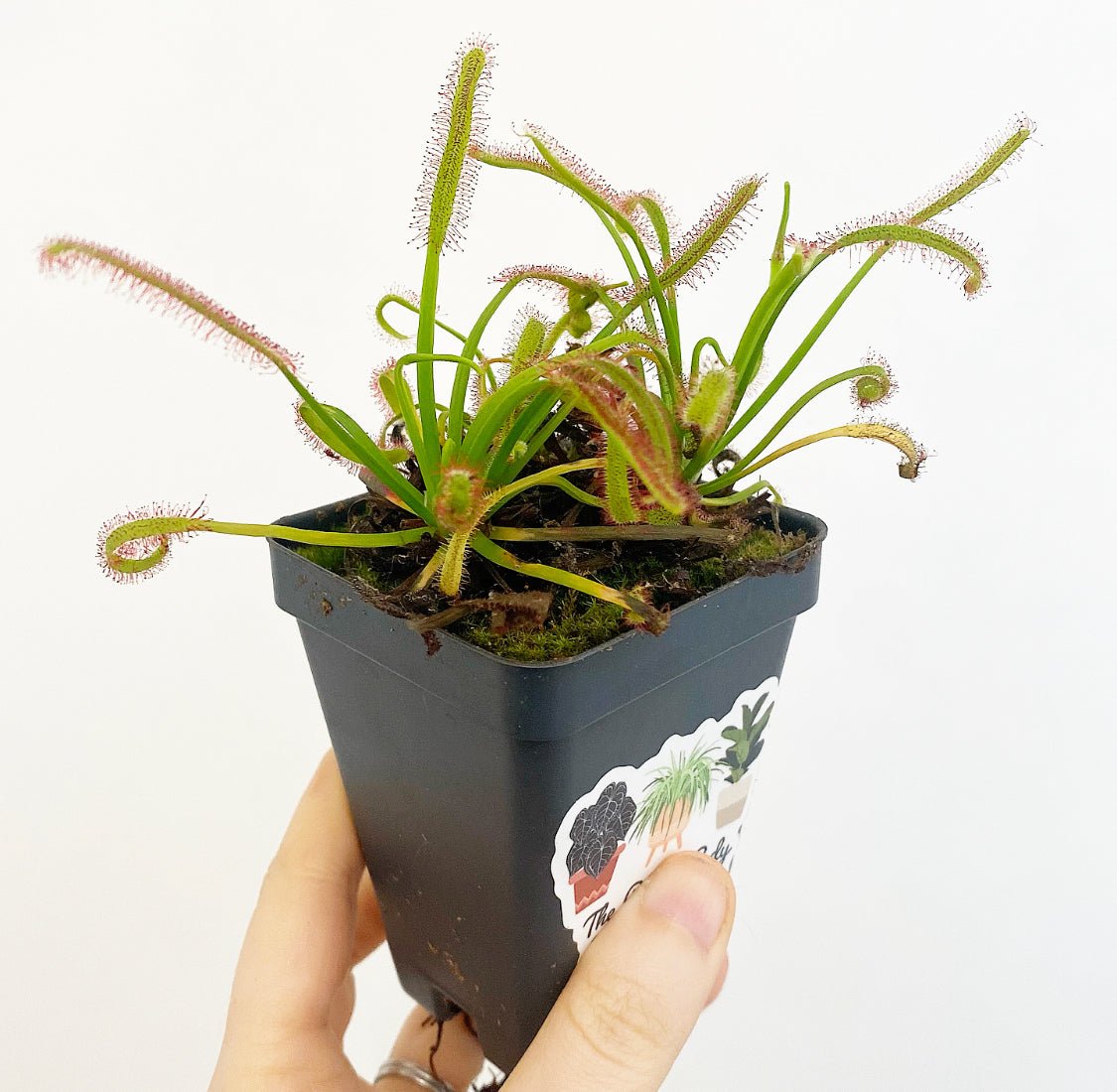The Plant Lady SF
Drosera capensis (Cape Sundew)
Drosera capensis (Cape Sundew)
Couldn't load pickup availability
Drosera capensis
Cape Sundew
Drosera capensis, commonly known as the Cape Sundew, is one of the easiest and most rewarding carnivorous plants to grow. Native to the Cape region of South Africa, it features long, slender leaves that unfurl dramatically and are covered in glistening, sticky "dew"—glandular hairs that trap and digest small insects like gnats and fruit flies.
With its elegant, arching leaves and constant insect-catching sparkle, D. capensis is as functional as it is beautiful. Even better, it often blooms freely in cultivation, sending up tall flower stalks with delicate, pink to lavender blossoms.
Care Guide
-
Light: Thrives in bright, direct light—ideally 4+ hours per day. Can also do well under strong grow lights.
-
Water: Use only distilled, rain, or reverse osmosis water. Keep soil consistently moist; a shallow tray of water beneath the pot works well.
-
Humidity: Adapts to average household humidity but appreciates a boost in drier environments.
-
Temperature: Prefers 65–85°F. Can tolerate cooler temps down to 40°F, but not frost.
-
Soil: Use a nutrient-free mix of sphagnum peat and perlite or sand (1:1). Never fertilize.
-
Feeding: Will happily catch its own prey. If indoors and pest-free, feed with dried bloodworms or crushed betta pellets monthly.
Drosera capensis blooms prolifically in bright conditions, often sending up flower stalks from spring through fall. Each stalk carries multiple blooms that open sequentially—delicate, five-petaled flowers in soft pink or lilac. While beautiful, you can snip them off to conserve the plant's energy if desired.
This is the perfect “gateway” carnivorous plant: forgiving, endlessly fascinating, and surprisingly pretty. It’s ideal for bright kitchens, sunny windowsills, or anywhere those pesky gnats like to hang out. A true workhorse with a touch of magic.
Share




